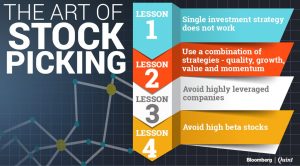
When developing a stock-picking strategy, it’s vital to define the type of analysis. There are two types you can choose from: fundamental and technical.
Fundamentalists estimate the intrinsic value of a security, and there are more patience and monitoring involved. In contrast, technicians use indicators and chart patterns to predict future price moves. By using these tools, they can determine which strengths and weakness the stocks have.
Does it work?
Many experts claim that technical analysis does work – if you do it correctly. The idea is to see how the prices move on the market when they’re shaped by external factors. Those can be natural disasters, and even political events. Because of that, the prices are bound to change and show up in the results, and they can only go up or down.
Technical analysts believe that this method works because market prices always reflect certain information. In addition to that, trends influence their movement. Lastly, history tends to repeat itself, so there is a pattern they can follow.

Still, you can analyze the historical market action, but the analysis needs to be high-quality. Furthermore, the investor has to be able to respond to the results. The profitability depends on his abilities and the tools he uses while doing the analysis. Therefore, he must be agile and responsive so that he could make money.
Who can use it?
Anyone with a basic knowledge of price charts can do technical analysis. It’s even better if they use an online or mobile platform. However, it’s not usually the first choice for buy-and-hold investors. They prefer fundamental analysis, whereas active traders depend on the technical one. They aim to take advantage of the fluctuations, no matter if the market is rising or falling.
What are they interested in?
The main difference between the fundamental and technical analysts is the fact that the latter doesn’t care about the intrinsic value. Instead, they look at past data trends. In addition to that, they also do not care about business models or management. Hence, they sometimes make a huge profit by trading companies they know nothing about.
Is this a long-term strategy?
The purpose of this analysis is to benefit from the fluctuations. If a technician sees that his stocks are not doing so well, he will waste no time to exit his position. Usually, they use stop-loss orders to minimize their losses.
Depending on the direction and the information he’s getting, he can either go short or long on a stock.
In contrast, a value investor has to practice patience and wait for improvements on the market.
Supply and Demand
One of the most important concepts regarding this analysis is the movement of supply and demand. It’s shown through support and resistance.
By using these concepts, they can determine points where a trend may chance. It could go both ways – either pause or reverse itself.
Therefore, analysts will know whether or not there will be an opportunity to trade. If the price reaches a certain point (support or resistance), then there are two possible scenarios. Either the price will bounce back, or it will push through and continue advancing.
Whichever the case, investors can place a bet on the direction they think it will go. If they fail to predict it correctly, they can exit their position with a small loss. However, if they’re correct, the move might be substantial.
Tools
They can choose a public domain indicator or a commercially available tool. However, there are four basic types: trend, momentum, volatility, and volume indicators.

In addition to that, they can use a stock chart to monitor the price movement. That way, if the price goes above its 200-day average, they can quickly respond to it.
Also, they can also use a stock screener to search for financial instruments. The stock screener shows data and price patterns, and it’s based on metrics that were defined by its users.
By using this tool, technicians can input conditions which they would like their stocks to have. For example, they could search for strong volume gainers and high average crossovers.
